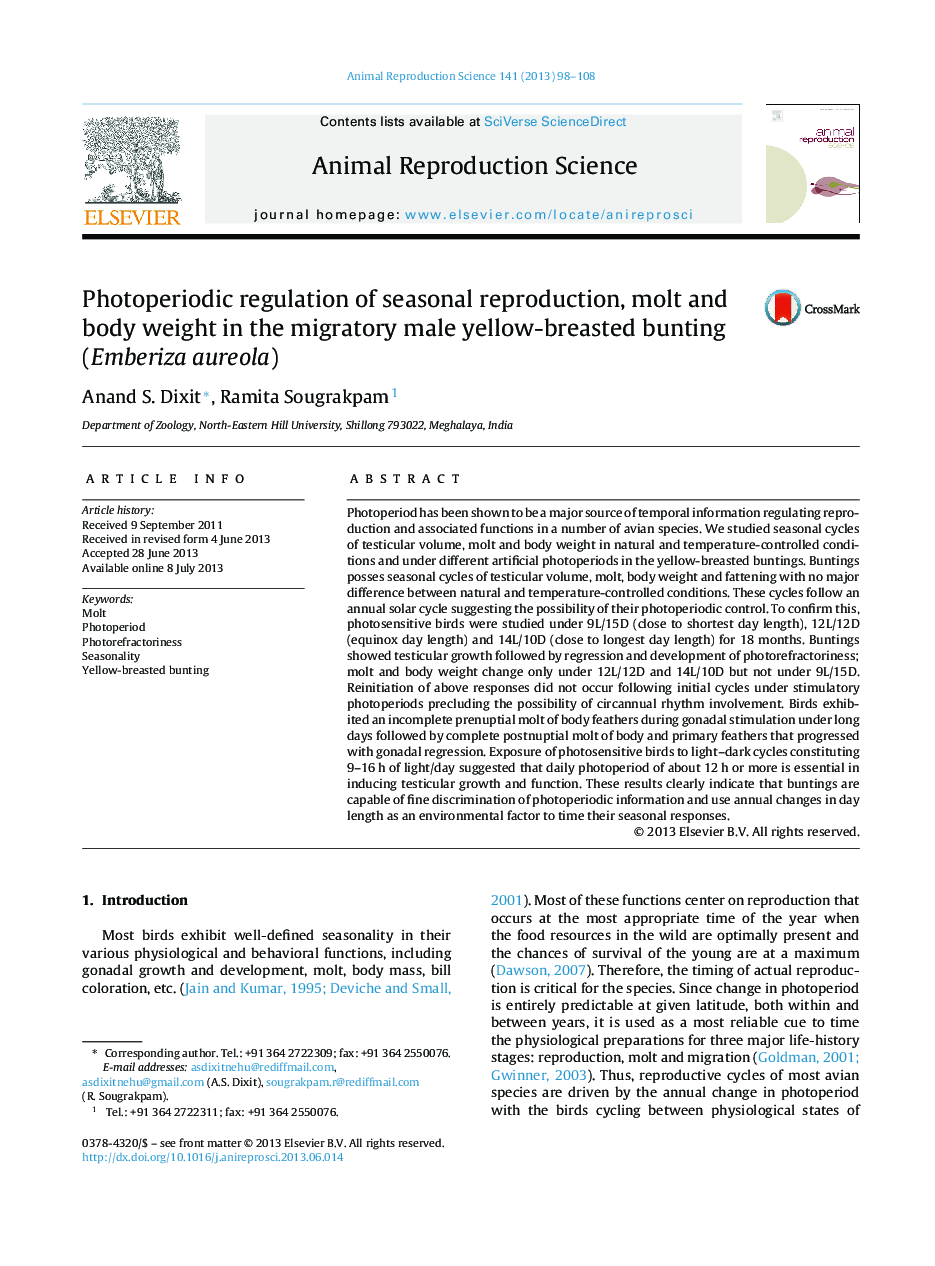| کد مقاله | کد نشریه | سال انتشار | مقاله انگلیسی | نسخه تمام متن |
|---|---|---|---|---|
| 2073003 | 1544746 | 2013 | 11 صفحه PDF | دانلود رایگان |

Photoperiod has been shown to be a major source of temporal information regulating reproduction and associated functions in a number of avian species. We studied seasonal cycles of testicular volume, molt and body weight in natural and temperature-controlled conditions and under different artificial photoperiods in the yellow-breasted buntings. Buntings posses seasonal cycles of testicular volume, molt, body weight and fattening with no major difference between natural and temperature-controlled conditions. These cycles follow an annual solar cycle suggesting the possibility of their photoperiodic control. To confirm this, photosensitive birds were studied under 9L/15D (close to shortest day length), 12L/12D (equinox day length) and 14L/10D (close to longest day length) for 18 months. Buntings showed testicular growth followed by regression and development of photorefractoriness; molt and body weight change only under 12L/12D and 14L/10D but not under 9L/15D. Reinitiation of above responses did not occur following initial cycles under stimulatory photoperiods precluding the possibility of circannual rhythm involvement. Birds exhibited an incomplete prenuptial molt of body feathers during gonadal stimulation under long days followed by complete postnuptial molt of body and primary feathers that progressed with gonadal regression. Exposure of photosensitive birds to light–dark cycles constituting 9–16 h of light/day suggested that daily photoperiod of about 12 h or more is essential in inducing testicular growth and function. These results clearly indicate that buntings are capable of fine discrimination of photoperiodic information and use annual changes in day length as an environmental factor to time their seasonal responses.
Journal: Animal Reproduction Science - Volume 141, Issues 1–2, September 2013, Pages 98–108